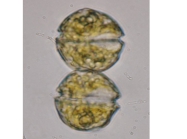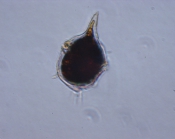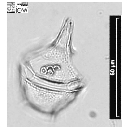
| Introduction | | Search taxa | | Taxon tree | | Taxon match | | Checklist | | Literature | | Stats | | Photogallery | | OBIS Vocab | | Log in |
CaRMS taxon detailsAmylax triacantha (Jørgensen) Sournia, 1984
110007 (urn:lsid:marinespecies.org:taxname:110007)
accepted
Species
marine
Not documented
LSID urn:lsid:algaebase.org:taxname:47161
LSID urn:lsid:algaebase.org:taxname:47161 [details]
Guiry, M.D. & Guiry, G.M. (2024). AlgaeBase. World-wide electronic publication, National University of Ireland, Galway (taxonomic information republished from AlgaeBase with permission of M.D. Guiry). Amylax triacantha (Jørgensen) Sournia, 1984. Accessed through: Nozères, C., Kennedy, M.K. (Eds.) (2024) Canadian Register of Marine Species at: https://www.marinespecies.org/carms/aphia.php?p=taxdetails&id=110007 on 2024-04-18
Nozères, C., Kennedy, M.K. (Eds.) (2024). Canadian Register of Marine Species. Amylax triacantha (Jørgensen) Sournia, 1984. Accessed at: https://www.marinespecies.org/carms/aphia.php?p=taxdetails&id=110007 on 2024-04-18
Date action by 2006-07-27 06:59:07Z changed Camba Reu, Cibran
context source (HKRMS)
Lam CWY. & Ho KC. (1988). Phytoplankton characteristics of Tolo Harbour. In: Morton B, editor. Asian Marine Biology 6. pp 5-18. Hong Kong University Press, Hong Kong. [details]
basis of record Gómez, F. (2005). A list of free-living dinoflagellate species in the world's oceans. <em>Acta Bot. Croat.</em> 64(1): 129-212. [details] basis of record Guiry, M.D. & Guiry, G.M. (2023). AlgaeBase. <em>World-wide electronic publication, National University of Ireland, Galway.</em> searched on YYYY-MM-DD., available online at http://www.algaebase.org [details] additional source Guiry, M.D. & Guiry, G.M. (2023). AlgaeBase. <em>World-wide electronic publication, National University of Ireland, Galway.</em> searched on YYYY-MM-DD., available online at http://www.algaebase.org [details] additional source Integrated Taxonomic Information System (ITIS). , available online at http://www.itis.gov [details] additional source Tomas, C.R. (Ed.). (1997). Identifying marine phytoplankton. Academic Press: San Diego, CA [etc.] (USA). ISBN 0-12-693018-X. XV, 858 pp., available online at http://www.sciencedirect.com/science/book/9780126930184 [details] additional source Brandt, S. (2001). Dinoflagellates, <B><I>in</I></B>: Costello, M.J. <i>et al.</i> (Ed.) (2001). <i>European register of marine species: a check-list of the marine species in Europe and a bibliography of guides to their identification. Collection Patrimoines Naturels,</i> 50: pp. 47-53 (look up in IMIS) [details] additional source Steidinger, K. A., M. A. Faust, and D. U. Hernández-Becerril. 2009. Dinoflagellates (Dinoflagellata) of the Gulf of Mexico, Pp. 131–154 in Felder, D.L. and D.K. Camp (eds.), Gulf of Mexico–Origins, Waters, and Biota. Biodiversity. Texas A&M Press, College [details] additional source Steidinger, K.A.; Tangen, K. (1997). Dinoflagellates. pp. 387-584. In: C.R. Tomas (ed.) (1997). Identifying Marine Phytoplankton. Academic Press: San Diego, CA [etc.] (USA). ISBN 0-12-693018-X. XV, 858 pp., available online at http://www.sciencedirect.com/science/article/pii/B9780126930184500057 [details] ecology source Koike, K.; Takishita, K. (2008). Anucleated cryptophyte vestiges in the gonyaulacalean dinoflagellates Amylax buxus and Amylax triacantha (Dinophyceae). <em>Phycological Research.</em> 56(4): 301-311., available online at https://doi.org/10.1111/j.1440-1835.2008.00512.x [details] ecology source Leles, S. G.; Mitra, A.; Flynn, K. J.; Stoecker, D. K.; Hansen, P. J.; Calbet, A.; McManus, G. B.; Sanders, R. W.; Caron, D. A.; Not, F.; Hallegraeff, G. M.; Pitta, P.; Raven, J. A.; Johnson, M. D.; Glibert, P. M.; Våge, S. (2017). Oceanic protists with different forms of acquired phototrophy display contrasting biogeographies and abundance. <em>Proceedings of the Royal Society B: Biological Sciences.</em> 284(1860): 20170664., available online at https://doi.org/10.1098/rspb.2017.0664 [details] Available for editors ecology source Mitra, A.; Caron, D. A.; Faure, E.; Flynn, K. J.; Leles, S. G.; Hansen, P. J.; McManus, G. B.; Not, F.; Do Rosario Gomes, H.; Santoferrara, L. F.; Stoecker, D. K.; Tillmann, U. (2023). The Mixoplankton Database (MDB): Diversity of photo‐phago‐trophic plankton in form, function, and distribution across the global ocean. <em>Journal of Eukaryotic Microbiology.</em> 70(4)., available online at https://doi.org/10.1111/jeu.12972 [details] ecology source Park, M. G.; Kim, M.; Kang, M. (2013). A Dinoflagellate <i>Amylax triacantha</i> with Plastids of the Cryptophyte Origin: Phylogeny, Feeding Mechanism, and Growth and Grazing Responses. <em>Journal of Eukaryotic Microbiology.</em> 60(4): 363-376., available online at https://doi.org/10.1111/jeu.12041 [details]  Present Present  Inaccurate Inaccurate  Introduced: alien Introduced: alien  Containing type locality Containing type locality
From editor or global species database
LSID urn:lsid:algaebase.org:taxname:47161 [details]From other sources
Diet general for group: both heterotrophic (eat other organisms) and autotrophic (photosynthetic) [details]Habitat pelagic [details] Importance General: known for producing dangerous toxins, particularly when in large numbers, called "red tides" because the cells are so abundant they make water change color. Also they can produce non-fatal or fatal amounts of toxins in predators (particularly shellfish) that may be eaten by humans. [details] Predators marine microorganisms and animal larvae [details] Reproduction general for group: both sexual and asexual [details] |



